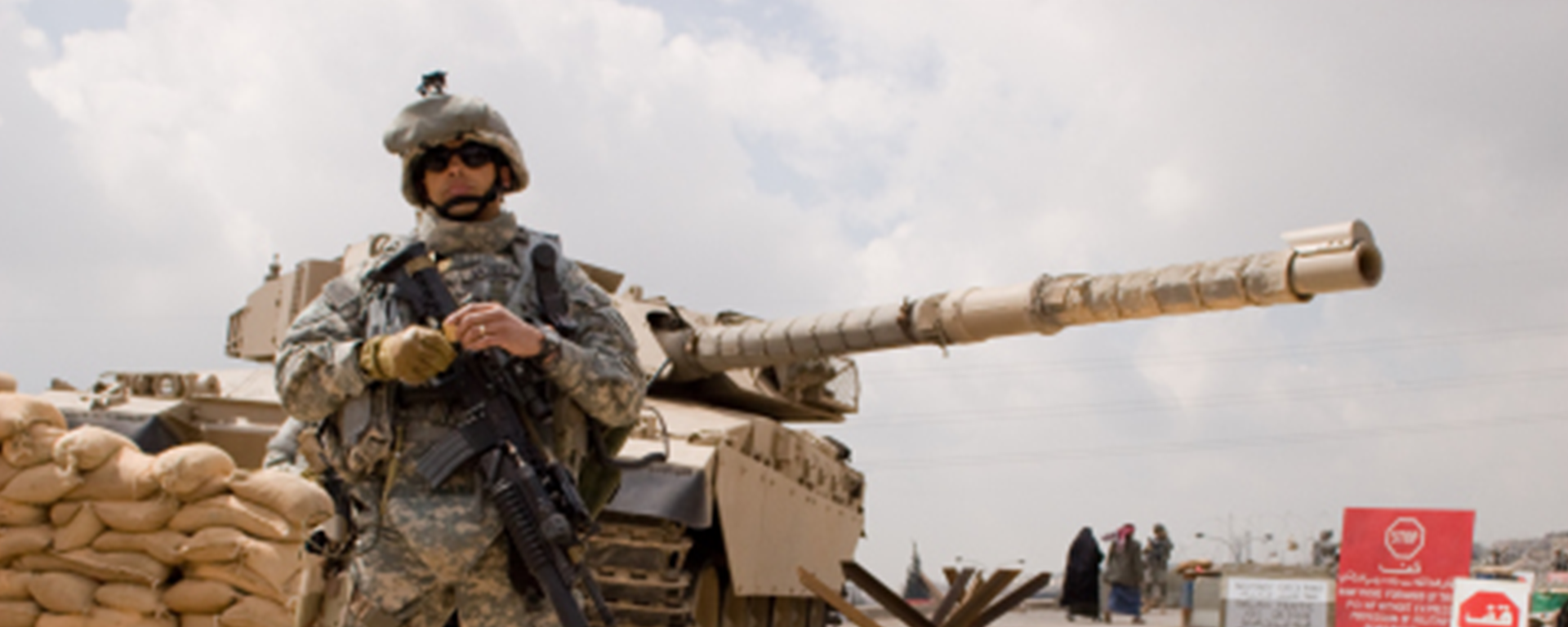
Redacted
Redacted is a film by Brian De Palma (Scarface, Dressed To Kill), based on an incident from 2006 in which occupying American troops were alleged to have raped a young Iraqi woman and murdered her family in the town of Samarra. The film ‘imagines’ events surrounding the incident through different media perspectives: a video diary being made by one of the soldiers, reports from a fictional French documentary crew, footage from Arabic news channels and internet broadcasts made by Al Qaeda-type insurgents.
The film deals with the brutalising effect of war – a theme previously explored by De Palma in Casualties Of War set during the Vietnam conflict – and presents its story in a hard-hitting, and occasionally shocking, manner which raised a number of classification issues around the borderline between the 15 and 18 categories.
A minimum 15 category was established by numerous uses of strong language (variations of ‘f**k’ and ‘motherf**ker’) with the BBFC Guidelines allowing for ‘frequent use of strong language’ at 15. There is also a single use of very strong language(‘c**t’) that occurs in the rape scene; the Guidelines at 15 state that ‘the strongest terms (eg ‘cunt’) will be acceptable only where justified by context’ and since such language reflects the callous attitude of the soldiers involved in the attack – but is not used continuously - it did not present a challenge to the 15 category.
The rape scene was considered carefully since portrayals of sexual violence are of acute concern to the BBFC, that concern reflecting the attitude of the public to the issue. The Guidelines at 15 state that ‘scenes of sexual violence must be discreet and brief’. Although the build-up to the horrific attack on the young woman and her family is quite protracted, the sexual aspect is quite restrained in terms of its length and the detail presented.
The intention of the scene is to show the brutalised personalities of the men involved – which may be part of their natural character, or a consequence of the chaotic wartime situation in which they find themselves, and is certainly portrayed as a an act of revenge for the death of one of their own – but the focus is not on the sexual element in their actions. Several aspects of the scene, including the off-screen murder of the woman’s family and the distorted images of the attack as viewed through the jerky, hand-held video camera and night-vision lighting, provide some distancing and a sense that no thrills or pleasure can be taken in the sexual assault. A lack of focus on, for instance, the nudity of the victim removes any erotic charge from the scene and leaves only what the director intended – a feeling of horror and revulsion within what is the pivotal moment in the film. Consequently, the sexual violence here was felt to meet the requirements of discretion and brevity to allow it to be passed at 15.
There are several moments of strong violence in the film (the shooting of the pregnant woman at the check point, the blowing up of the American soldier by a mine, the mixture of reality and dramatised footage of dead bodies at the work’s conclusion) and although these sequences contain some injury detail they do not go beyond the allowances of the Guidelines at 15 that ‘Violence may be strong but may not dwell on the infliction of pain or injury’. There would also be some expectation of the strength of such violence in a film that deals frankly with the horrors of war.
However, the sequence in which the audience sees an American soldier being beheaded and then the severed head being held up to the camera did test the Guidelines’ restrictions on the portrayal of ‘the infliction of pain or injury’ and ‘the strongest gory images’.
The horror within this sequence is signposted to the audience in an earlier long-distance and relatively detail-free shot of the soldier’s body laid out on a piece of ground with the head propped on the chest. The actual beheading also lacks detail as the process of the knife being used takes place below the edge of the frame, and although some blood is seen flowing onto the ground, there is no gratuitous dwelling on the violence. The sight of the severed head is gory and gruesome, but clearly not intended to be shocking for its own sake but to show how the brutality of war infects all those involved in such a conflict. There is also some distancing of its impact with the graininess of the ‘webcam’ images as seen on a computer screen.
This scene, along with the rape, was carefully considered in terms of their detail within the context of the film’s themes and whether they were appropriate for older teenagers. The idea of beheadings would not be novel to most 15 year olds who would be aware of such horrors taking place in modern war settings through the news, and the discretion with which it is shown here quite properly emphasises the brutality without wallowing in it in a manner that would tend to suggest the adult 18 category. Given the borderline nature of these scenes the issues were considered by a wider number of the examining group than usual before the decision was made to pass the work at 15.
The BBFCinsight provided for the work stated that it contained ‘a scene of rape, strong violence and very strong language’. A subsequent classification of the work when submitted for a DVD release maintained the 15 category since it was not felt that the strength of the issues presented a significant harm risk in the home-viewing environment.
Redacted was selected for National Schools Film Week 2008.